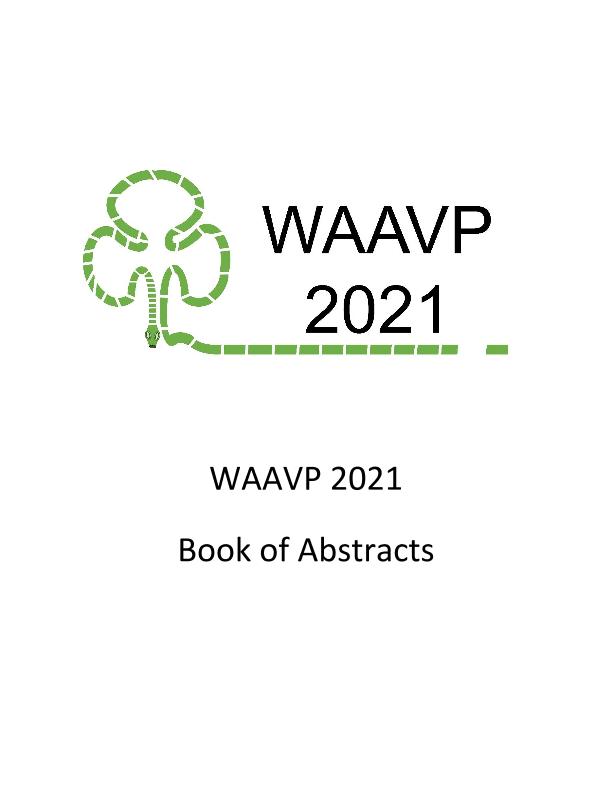Evento
Quantitative exposure assessment and risk characterization for fipronil residues in laying hen eggs
Cantón, Lucila ; Signorini, Marcelo; Cantón, Candela
; Signorini, Marcelo; Cantón, Candela ; Dominguez, Maria Paula
; Dominguez, Maria Paula ; Farias, Cristina Elena
; Farias, Cristina Elena ; Alvarez, Luis Ignacio
; Alvarez, Luis Ignacio ; Lanusse, Carlos Edmundo
; Lanusse, Carlos Edmundo ; Moreno Torrejon, Laura
; Moreno Torrejon, Laura
 ; Signorini, Marcelo; Cantón, Candela
; Signorini, Marcelo; Cantón, Candela ; Dominguez, Maria Paula
; Dominguez, Maria Paula ; Farias, Cristina Elena
; Farias, Cristina Elena ; Alvarez, Luis Ignacio
; Alvarez, Luis Ignacio ; Lanusse, Carlos Edmundo
; Lanusse, Carlos Edmundo ; Moreno Torrejon, Laura
; Moreno Torrejon, Laura
Tipo del evento:
Conferencia
Nombre del evento:
28th Conference of the World Association for the Advancement of Veterinary Parasitology
Fecha del evento:
19/07/2021
Institución Organizadora:
World Association for the Advancement of Veterinary Parasitology;
University College Dublin;
Título del Libro:
Book of Abstracts: 28th Conference of the World Association for the Advancement of Veterinary Parasitology
Editorial:
World Association for the Advancement of Veterinary Parasitology
Idioma:
Inglés
Clasificación temática:
Resumen
The growing expansion of poultry production in Argentina is linked to veterinary drug use to treat both infectious and parasitic diseases. Few ectoparasitic compounds are approved for use in poultry production. Fipronil (FIP) is a pesticide widely used in agriculture. It is also authorized to control ectoparasites in small animals and, in some countries, in cattle. There has been evidence of FIP extra-label use in laying hens, mainly to control the red mite Dermanyssus gallinae. This is an ectoparasite that causes great economic losses in the laying hen industry. Consequently, FIP residues have been reported in eggs. The aim of the present work was to carry out a quantitative exposure assessment and risk characterization for FIP residues in laying hen eggs for local consumption. Consumption surveys and egg sampling were conducted for three years in five different cities. The egg samples were analyzed to determine FIP concentrations by HPLC-MSMS. The FIP prevalence, residue concentrations, residue stability to different cooking methods, egg consumption, among the most important variables were modelled. The egg sample number taken was 350, of which 20.7% contained FIP residues. The highest residue corresponded to the FIP sulfone metabolite (FIP-SO2). The egg marker residue (FIP + FIP-SO2) levels quantified were considered for the exposure assessment. Concentrations ranged between 0.01 to 2.51 µg/g with a median value of 0.15 µg/g. When eggs were cooked, FIP residues were stable and also concentrated. The greatest increase in FIP concentrations was achieved after microwaving, followed by omelette making and boiling. The highest probability of consuming eggs with FIP residues above the admissible daily intake (ADI) was for young adults (20.8%), followed by babies (16.9%), young children (16.4%), children (13.4%), teenagers (10.3%), older adults (9.41%) and adults (8.65%). Considering these exposure values, there is a risk associated with egg consumption containing FIP residues in all age groups.
Archivos asociados
Licencia
Identificadores
Colecciones
Eventos(CIVETAN)
Eventos de CENTRO DE INVESTIGACION VETERINARIA DE TANDIL
Eventos de CENTRO DE INVESTIGACION VETERINARIA DE TANDIL
Citación
Quantitative exposure assessment and risk characterization for fipronil residues in laying hen eggs; 28th Conference of the World Association for the Advancement of Veterinary Parasitology; Dublin; Irlanda; 2021; 1-2
Compartir



